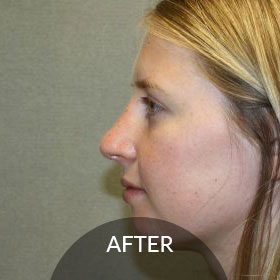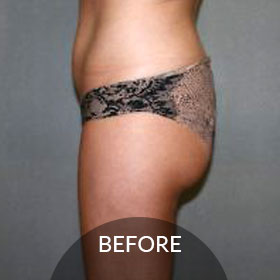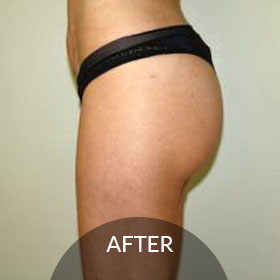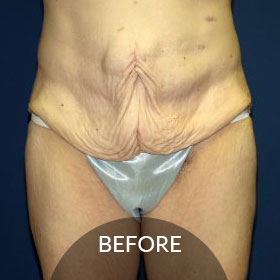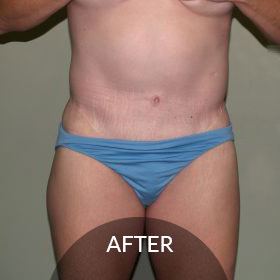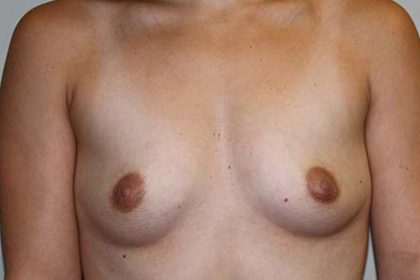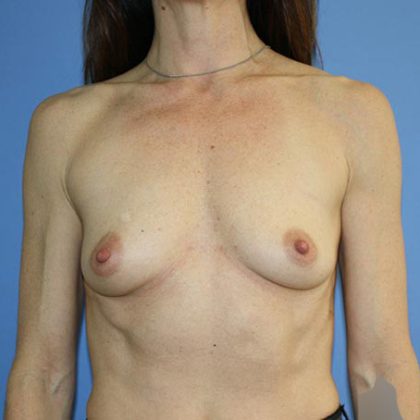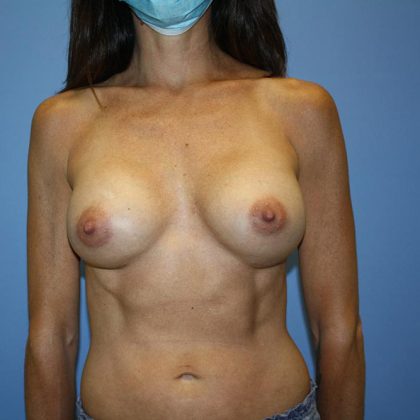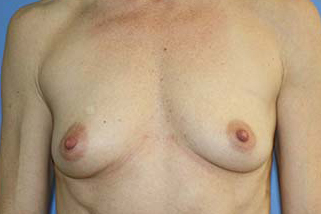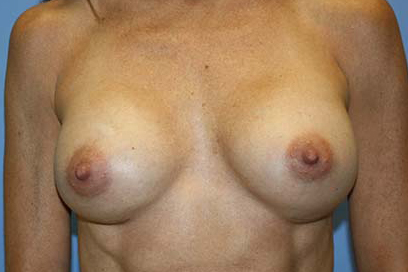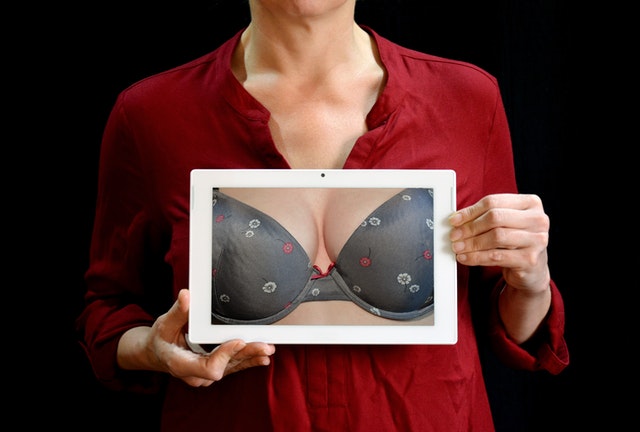Breast Enhancement Revision
Conveniently located to serve the areas of Beachwood and Cleveland, Ohio
Breast enhancement revision is a surgical procedure to correct, enhance, or maintain the results of a previous breast augmentation surgery. With almost 300,000 procedures performed in 2019,[1] breast augmentation is one of the most popular plastic surgeries in the country – and with good reason. This procedure has one of the highest satisfaction rates, with four out of five patients saying their results exceed expectations.[2] After all, this procedure gives women more control and confidence over their bodies. And, with the evolving advancements in plastic surgery technologies and techniques, women are seeing even better results through simpler, safer procedures.
But, that doesn’t mean this procedure is not without risks. Many women are unfortunately met with unwanted results and reactions. These can include scar tissue growth, an unflattering appearance, underwhelming results, and even chronic illness. If you are unhappy with your initial breast augmentation, there is a procedure that can resolve your worries and better define this important part of your femininity: a breast revision.
With his decades of experience, board-certified plastic surgeon Dr. Gregory Fedele has helped many women overcome the challenges that can follow a breast augmentation and live happily with breasts tailored to their ideal aesthetic. If you would like to learn more about Dr. Fedele’s approach, please schedule a consultation at our Cleveland offices. To speak with us directly, please call (216) 464-1616.
Contents
Before and After Photos
Why Breast Enhancement Revision
Many different reactions make a breast enhancement revision necessary. These can happen right away or take years to develop. It is important to keep an eye out for signs of complications and notify a board-certified plastic surgeon if you notice any unwanted changes. They will be able to walk you through comprehensive care to reverse the effects. Most women who seek a breast enhancement revision do so because of three reasons: capsular contracture, breast implant illness (BII), or a change in their desired aesthetics.
Capsular Contracture
Capsular contracture occurs when the internal breast tissue “over-reacts” to the foreign implant. After breast augmentation, your breast tissue develops scar tissue that slowly heals around the implant. This is a normal and an intended stage of the recovery process. This capsule of scar tissue helps to secure the implant naturally in place. However, complications can arise when the scar tissue experiences an excessive fibrotic reaction to the breast implant. A condition known as capsular contracture occurs when the newly forming scar tissue begins to harden and grow unevenly around the implants, causing severe pain in one or both breasts. This overgrowth of scar tissue also displaces the implant, forcing it to appear higher or to rest awkwardly on the chest. While studies differ on the rate of occurrence in women, incidences of capsular contracture appear between 3% to 19% of breast augmentation patients.[3] The exact causes of capsular contracture are believed to center around implant choice and surgical technique. For instance, textured implants are associated with a lower incidence of capsular contracture because their textured surface is thought to disrupt the contracting forces around the implant.[4] Likewise, implants that are placed under the muscle rather than under the skin seem to experience lower rates as well.
When diagnosing capsular contracture, we use the Baker Scale to gauge the degree of the condition.
Grade I: The tissue is soft and the implant appears natural in shape and size. The breasts appear normal and fit the desired appearance.
Grade II: The breast is a little firm, but still appears normal on the chest. There’s minimal scar tissue around the implant.
Grade III: The breast is firmer and may appear distorted for some patients. For some, this grade does not inhibit their happiness with the state of their breasts.
Grade IV: The breast is painful and hard to squeeze. The implant has migrated away from its original, natural placement and appears abnormal in shape.
Breast Implant Illness
Breast Implant Illness is a highly contested topic in plastic surgery. While symptoms are well-documented and reported, researchers have had trouble linking them to the implant devices directly. But women know their bodies and know when something isn’t quite right. Symptoms of Breast Implant Illness vary but common ones are:[5][6]
- Difficulty focusing
- Impaired memory
- Depression
- Anxiety
- Weight instability
- Muscle and joint pain
- Liver and kidney dysfunction
- Poor sleep and insomnia
- Hair loss
- Chronic fatigue
Since these symptoms are prevalent in a wide range of other health conditions, diagnosing Breast Implant Illness can be difficult. Adding to this difficulty is the fact that these symptoms can immediately set in after a breast augmentation or develop years down the road. If you believe recent symptoms could be linked to your breast implants, it is best to seek the opinion of a board-certified plastic surgeon. They will be able to see if there’s a causal link between your symptoms and your breast implants.
Changing Cup Size
For some, there may be no health concerns or worries about a misshapen appearance. For some, they simply just want a change in their aesthetic. Whether going bigger or smaller, a breast enhancement revision can give you implants that are more in line with you who are today. After all, implants are not intended to be lifetime devices. Who you were a decade ago has surely changed. Allow your implants to change with you. Whether it’s a change in size or removing them altogether, Dr. Fedele can assist in tailoring your breasts to better fit your life.
Candidates
If you are interested in seeing if you qualify for a revision breast enhancement, please schedule a personal consultation today. Here, Dr. Fedele will meet with you to discuss your initial augmentation, your satisfaction with the results, and how you’d wish to proceed with a revision. If you desire new implants, he will walk you through implant selection and have you “try on” various sizes. Once we have a personalized treatment plan in place, we will schedule your revision procedure.
Revision Procedures
During a revision procedure, Dr. Fedele tries to avoid making new scars by using the previous incision as entry points. Once he has removed the implant, Dr. Fedele will either clear away contracting scar tissue or displaced silicone. He will then adjust the old implant or introduce new implants to fit more in line with your desired results. He will construct a new pocket in the breast tissue for the implant to rest naturally. Once he has positioned both implants symmetrically, he will make the necessary adjustments to help ensure the breast tissue grows safely and evenly around the implant, avoiding future complications. He will then close the incisions and wrap your chest in a compression garment to promote healing.
Deciding What’s Best
Deciding to undergo a breast enhancement revision is not cut and dry. With symptoms popping up years down the road, many women might not register that their implants are to blame. For those who notice adverse reactions right away, it can be disheartening and overwhelming. After all, recovering from a breast augmentation is not an easy process. That’s why Dr. Fedele and his team are committed to giving these women another chance at achieving the body of their dreams.
How Much Does Breast Implant Revision Cost in Cleveland?
The cost of your breast enhancement revision will depend on the circumstances of your procedure. We will need to factor in surgical costs, new implants, and any other expenses included in your personalized treatment plan. We will discuss and determine the cost of your care during your personal consultation. If you would like to finance your care, please check out the financing page where you will learn about the options we offer. If you are interested in reading more about our services, please visit our blog. Here, we discuss a range of topics in the world of plastic surgery. From asymmetrical breasts to the craze behind Brazilian butt lifts, our blog is chock-full of helpful information for all prospective patients. If you have any questions, please call our offices at (216) 464-1616.
References
- 2019 Plastic Surgery Statistics. (2019). American Society of Plastic Surgeons. https://www.plasticsurgery.org/news/plastic-surgery-statistics?sub=2019+Plastic+Surgery+Statistics
- Swanson, Eric M.D. Prospective Outcome Study of 225 Cases of Breast Augmentation, Plastic and Reconstructive Surgery: May 2013 – Volume 131 – Issue 5 – p 1158-1166 doi: 10.1097/PRS.0b013e318287a0e1
- Hidalgo, David A. M.D.; Weinstein, Andrew L. M.D., M.S. Surgical Treatment for Capsular Contracture: A New Paradigm and Algorithm, Plastic and Reconstructive Surgery: September 2020 – Volume 146 – Issue 3 – p 516-525 doi: 10.1097/PRS.0000000000007079
- Headon, H., Kasem, A., & Mokbel, K. (2015). Capsular Contracture after Breast Augmentation: An Update for Clinical Practice. Archives of plastic surgery, 42(5), 532–543. https://doi.org/10.5999/aps.2015.42.5.532
- Dijkman HBPM, Slaats I, Bult P. Assessment of Silicone Particle Migration Among Women Undergoing Removal or Revision of Silicone Breast Implants in the Netherlands. JAMA Network Open. 2021;4(9):e2125381. doi:10.1001/jamanetworkopen.2021.25381
- Lee, M., Ponraja, G., McLeod, K., & Chong, S. (2020). Breast Implant Illness: A Biofilm Hypothesis. Plastic and reconstructive surgery. Global open, 8(4), e2755. https://doi.org/10.1097/GOX.0000000000002755





